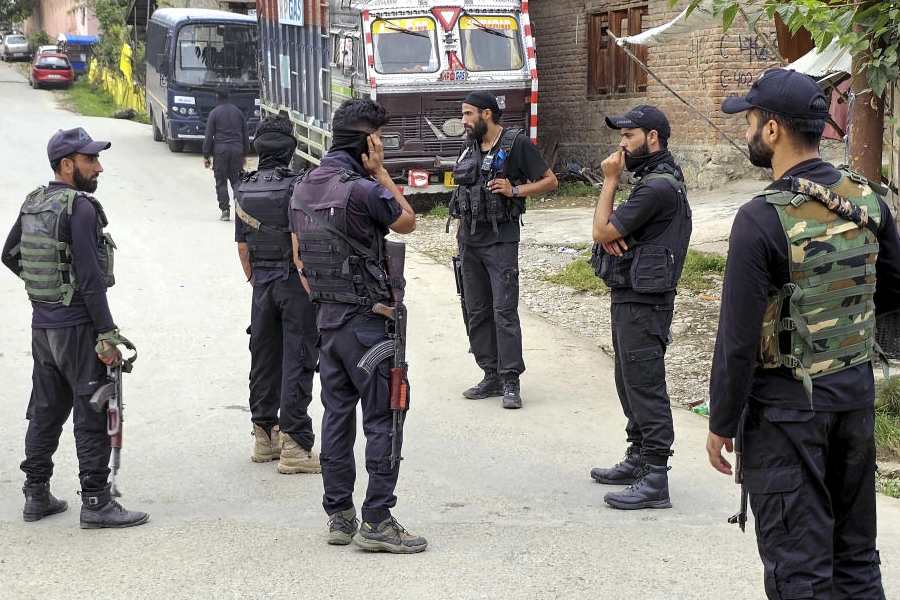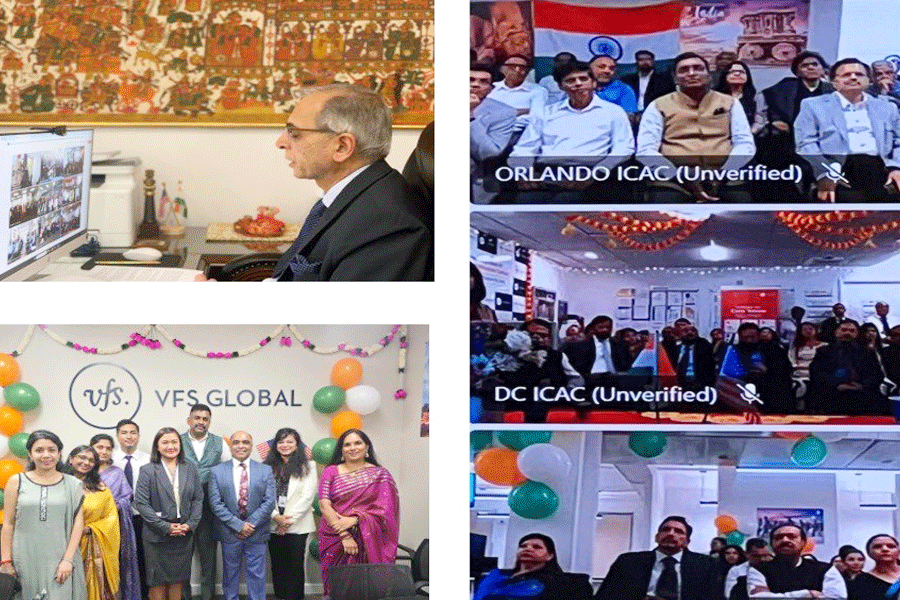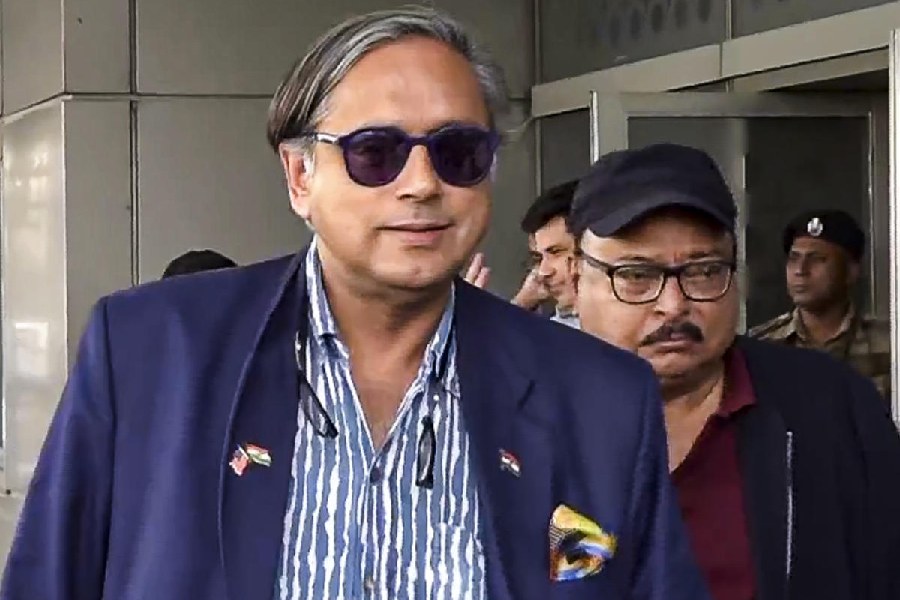
Bardroy Barretto, Mumbai ad filmmaker-turned-feature film director, was having breakfast with a friend on Wednesday when an unexpected email popped up on his phone. It was from the Academy of Motion Picture Arts and Sciences in Los Angeles - better known as the Oscar folks.
Barretto learnt that his Konkani film Nachom-ia Kumpasar (Let's Dance to the Rythm) was one of 112 films shortlisted for this year's Oscars - the 88th Academy Awards - for its music, or the "original score" category.
The film, about a Goan singer, has been getting rave reviews as it crosses 300 screenings in Goa and travels the film festival circuit from Paris to West Asia. The film won four awards at this year's international film festival in Milan, three in Romania and another in London.
"My biggest gift is when people - some even in wheelchairs - come up and thank me for making the film," director Barretto says.

A musical, Nachom-ia Kumpasar is based on the high-voltage love story between the Mumbai-based Goan musical genius and composer, Chris Perry, and his Goan muse, singer Lorna Cordeiro. Together the couple performed at nightclubs, weddings and concerts across Mumbai, Delhi and Calcutta, and soon became the stuff of legend, till Chris left Lorna after a nine-year-long partnership in the mid-Seventies, to start a music school in the Gulf.
The film's music, originally composed by Chris, was written out by the film's music director, Ronnie Monsorate - the Oscar nominee - who had performed with Lorna and Chris as a young musician. It tells the (slightly fictionalised) story of Lorna and Chris (Donna and Lawry in the film) as they flirt, fall in love and crash into despair, before she rises from the ashes, defying his 20-year contract which forbids her from singing with any other musician.
The real-life Lorna did not succeed in beating this contract and remained crushed under its weight until she was resurrected by many valiant attempts of Monsorate in the Nineties. "I only had a voice; it was Chris who moulded me," she told The Telegraph in a rare interview in January this year.
Monsorate recounts how he scored the music for the film. "It took me two months to write the background music and another two weeks to record it," he says. "The sound tracks of the 18 songs took one-and-a-half months to write and a week to record. The sound quality is far superior than the original since the recording facilities back then were not half as good."
But if the music is what has the audience coming back for more, fitting it to the original was certainly no cakewalk. "The film is shot using the original tracks, making it a hard bargain when it came to synchronising the music (played by 40 musicians on strings, brass, keys and drums) with the original which was recorded not in a studio but at live shows, making the tempo highly inconsistent," says Monsorate who is thrilled about the prospect of making it to the longlist. (The award nominations will be announced on January 14, 2016, and the final ceremony will be held in Hollywood on February 28.)
But the path to the golden statuette calls for a large scale of luck and funds. "Sending out DVDs to the 6,000-plus members of the Academy whose votes will decide the film's fate will cost us a few crores of rupees," says the low-profile Barretto, who set sights on his filmmaking journey in Class IX of Goa's Loyola High School, when his brother gifted him an SLR camera.

"I'd joke with my friends that I'd make one film and stand for elections," he says.
The words may not have turned out exactly prophetic, but they did present a sense of deja vu for folks who lived in Goa in the Sixties and Seventies, which the film embraces.
Barretto celebrates everyday village life in Nachom-ia Kumpasar. People amble down red mud paths or take short cuts through fields, shoes in hand. As a young boy in his village of Galjibaga in Goa's far south, it was common to see neighbours returning home from the feast Mass, shoes dangling by the laces and shoebites on the feet.
The film also reflects Goa's all-pervasive caste system through its dress and colours - muted shades for the upper castes and bolder ones for the hoi polloi. And through the same kaleidoscope, you see village fixtures from the Sixties and Seventies come to life: the resident matchmaker pairing off eligible singles at open-air wedding luncheons celebrated in the courtyard; and young boys gossiping about the village belles and their love affairs at the foot of a hillock.
"It's the little things that strike a chord in the audience," says Barretto, who is swamped with an outpouring of praise and affection from adoring audiences online and offline. "Many people say they've seen the film a few dozen times, accompanying friends and relatives from overseas on repeat visits. This trend took us completely by surprise, since we'd made a conservative estimate of people returning for just an encore."
The response from overseas has been equally overwhelming, Barretto says. "Every other day we get invited to participate in international film festivals; and in those which we participate, we get approached for the purchase of film rights. People from the film fraternity abroad are surprised at the stir created by a low-budget period film in Konkani, rather than a Bollywood offering."
Back home, when the audience meets Barretto, Monsorrate and the cast after shows, many talk of how the film reduced them to tears. As one woman said, "I thought I wouldn't cry the second time I saw it, but I did." At another show in Goa, Barretto met a long-lost friend whose Korean wife said the film had taught her so much more about her husband's land and culture. And then there are those who end up feeling sorry for Donna and want to go and kill Lawry. For a few it's the other way round too.
For them all, the film is more than a story - it's an ode to a love song that still breaks hearts.










